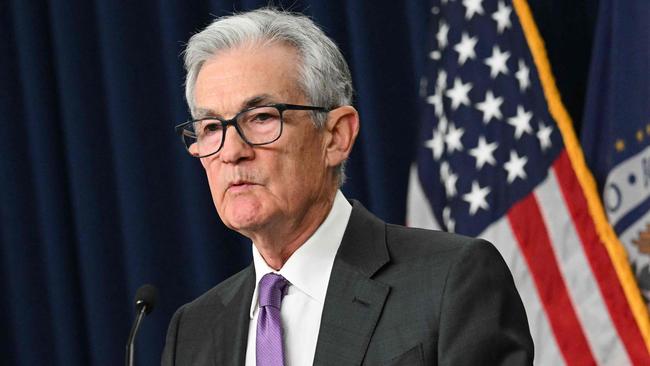The US Fed’s ‘dot points’ shake up the markets
The US Fed’s ‘dot points’, supposedly predicting rate cuts, stirred up the markets bigtime. But they’re well known for their inability to forecast the future.

Business
Don't miss out on the headlines from Business. Followed categories will be added to My News.
Wow. That was some morning, the like of which we have not seen for some considerable time.
It kicked off at 2.30 Wednesday afternoon in Washington – 5.30, early Thursday morning, east coast time Down Under – and then really burst across computer screens around Australia at 11.30 in the AM, out of Canberra.
Now, those six hours weren’t quite up to the “Ten Days that Shook the World” in and around St Petersburg, circa 1917.
Or, even the somewhat less momentous “Seven Days that Shook the World”, after the death of Harry and William’s mum, eight decades on, in 1997.
First came the Fed’s rate decision. Absolutely no surprise: like our Reserve Bank two days earlier, the Fed’s policy rate was left unchanged.
But, we had the Fed’s so-called ‘dot points’, supposedly ‘predicting’ three rate cuts over the rest of the year.
Wall St, which had first – for the five hours of trading up to the announcement – just been paddling, turned, to coin a phrase, not so much a whiter shade of pale, but all-out bullish green.
The Dow leapt 400 points – to a new record, of course – after having leapt 300 points the day before.
All niggling worries that, after both the latest US consumer and producer inflation numbers, the Fed might not cut, were swept away by Wall St’s all-consuming unquenchable greed.
Never mind the inflation; look, the Fed is promising to slash rates!
Earth to idiots – across Manhattan, and in Sydney and Melbourne to: the dot points are not a promise, but the, almost always flawed predictions of the Fed.
Let me tell you what these same ‘dot points’ predicted at this same, March, Fed meeting in 2022.
They predicted the Fed policy rate would be just under 1 per cent by December 2022.
What was it actually?
Ur, just a tiny bit higher – at 4.25 to 4.5 per cent; as the Fed responded to the surging inflation through 2022 that it hadn’t ‘seen’ coming in March of that year.
And, do I need to remind anyone Down Under of “no rate rise before 2024?”. And which, as I wrote all through 2021, that RBA governor Philip Lowe would do his job – hike rates – if he had to? And he, of course, did.
Then at 11.30 we got the latest ABS jobs data: a stunning 100,000-plus jobs in February. The jobless rate took a huge step down from 4.1 to 3.7 per cent.
Now, as I’ve been explaining for decades, the jobless figures are notoriously – statistically – dodgy.
But, that said, there is no way anyone could interpret these numbers as evidence of the economy hitting the wall.
They immediately validate RBA governor Michele Bullock’s ‘half-pivot’.
That she didn’t follow the Fed in its 180, going from “future rate hikes” to “future rate cuts”. That she only went halfway; to “not ruling anything in or out”.
Right now, you’ve got to say – taking the jobless numbers at (dodgy) face value, but also watching wage settlements, population growth and (just awful) productivity, the next rate move is more likely to be a hike than a cut.
Originally published as The US Fed’s ‘dot points’ shake up the markets



